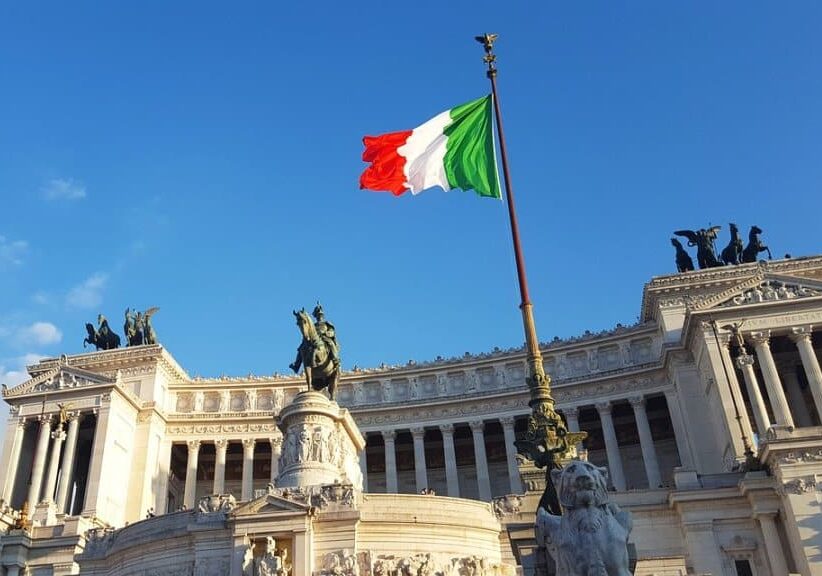The cost of living in Italy can differ depending on where you live. Major cities like Rome and Milan are generally more expensive, while smaller cities and rural areas offer more affordable options. Everyday expenses such as rent, food prices, transportation, and healthcare are lower than in many other Western countries, especially the U.S. or the U.K.
In this article, we’ll explain what you can expect to spend living in Italy. You’ll see monthly budgets, housing, groceries, and more, so you can better plan for life in one of the world’s most culturally rich countries.
Is the cost of living in Italy expensive?

A single person can expect to spend around €650 to €1300 monthly, excluding rent. For a family of four, the monthly cost ranges from €2000 to €3200, including rent. Daily expenses like public transport, groceries, and healthcare are reasonably priced, but imported goods and housing in popular areas can be costly.
Therefore, Italy has a more affordable lifestyle than many parts of the United States or the United Kingdom. Many people enjoy a good quality of life in Italy, especially in regions where local markets, fresh food, and community services are easily accessible. The statistics also speak for themselves, as Italy ranks 27th on the Global Citizen Solutions Quality of Life Index, which ranks countries based on six key factors that affect daily living. These include the cost of living, sustainability, freedom, happiness levels, environmental performance, and migrant acceptance.
Housing Costs in Italy
Housing costs in Italy are different depending on where you live, what kind of property you choose, and whether you are renting or buying. Big cities like Rome, Milan, and Florence are more expensive, especially in the city center or in old, historic areas. On the other hand, smaller towns and rural areas are usually cheaper. For example, southern cities like Palermo or Bari often have lower housing costs than cities in the north.
Many people, like expats, students, and young professionals, choose to rent. Renting a one-bedroom apartment in the city center costs between €600 and €1,500 per month. If you live outside the city center, the rent will be less. If you want to buy property in Italy, the price depends on the city and neighborhood. Fancy or newly renovated homes in central areas cost more, while older houses in quieter, less popular places are often much cheaper.
City | 1-Bedroom Rent (City Center) | 1-Bedroom Rent (Outside Center) | Price per m² to Buy (City Center) | Price per m² to Buy (Outside Center) |
Rome | €1,150 | €800 | €5,000 | €3,200 |
Milan | €1,400 | €950 | €6,300 | €4,000 |
Florence | €1,000 | €750 | €4,800 | €3,000 |
Naples | €850 | €600 | €3,800 | €2,300 |
Bologna | €1,000 | €700 | €4,300 | €2,800 |
Turin | €800 | €550 | €3,500 | €2,200 |
Palermo | €600 | €450 | €2,500 | €1,800 |
Bari | €650 | €500 | €2,800 | €2,000 |
Cost of Food in Italy
Food costs in Italy are reasonable, especially if you buy local and cook at home. Fresh produce, pasta, bread, and cheese are affordable at markets and supermarkets. Eating out can be inexpensive too, especially at small local trattorias or pizzerias. Larger cities like Rome or Milan may have higher prices, but even there, you can find budget-friendly options. An average person might spend €200–€350 per month on groceries, depending on eating habits.
Item | Average Cost (EUR) |
Loaf of bread (500g) | €1.50 |
1 liter of milk | €1.30 |
Dozen eggs | €3.00 |
1 kg of rice | €2.00 |
1 kg of pasta | €1.20 |
1 kg of chicken breast | €8.00 |
1 kg of apples | €2.20 |
1 kg of tomatoes | €2.00 |
Cappuccino (at a café) | €1.50 |
Meal at an inexpensive restaurant | €15.00 |
Three-course meal for 2 (mid-range) | €50.00 |
Transportation Costs in Italy
Transportation costs in Italy also depend on where you live and how often you travel. Public transportation is well developed and affordable in big cities like Rome, Milan, and Florence. You can use buses, trams, and metro systems with a single ticket or a monthly pass. Many people rely on trains for regional or cross-country travel, as Italy’s rail system is fast and efficient.
Taxis and ride-sharing apps are available in most cities, but can be more expensive. Popular ride apps include Free Now, ItTaxi, and Uber, which are available only in larger cities like Rome and Milan. Gasoline in Italy is among the most expensive in Europe.
Transportation Type | Average Cost (EUR) |
One-way public transport ticket | €1.50 – €2.00 |
Monthly public transport pass | €35.00 – €55.00 |
Taxi starting fare | €4.00 – €6.00 |
Taxi (per km) | €1.20 – €1.80 |
Gasoline (per liter) | €1.85 – €2.00 |
Intercity train (e.g., Rome–Florence) | €20 – €50+ (depends on time and class) |
Utility Costs in Italy
Utilities in Italy can take up a lot of your monthly expenses, especially in winter. The total cost depends on your location, the size of your home, how energy-efficient it is, and the type of heating system you use. In cities, electricity and gas are the most common. People may use wood stoves, pellets, or even solar panels in rural areas.
During colder months, heating can cause utility bills to rise sharply, especially if you live in the north. In general, expect to pay more if you use multiple heating sources like gas and electricity.
Utility Type | Average Monthly Cost (EUR) |
Electricity + Gas (small apartment) | €100 – €160 |
Electricity + Gas (family home) | €180 – €300 |
Internet (unlimited broadband) | €25 – €35 |
Water | €30 – €50 |
Heating with wood or pellets | €60 – €150 (seasonal) |
Healthcare Costs in Italy
Healthcare in Italy is both affordable and high-quality, particularly compared to the United States. Italy has a public healthcare system called the Servizio Sanitario Nazionale (SSN), which provides low-cost or free services to residents. Once you’ve lived in Italy for six months and have your Permesso di Soggiorno (residency permit) and Carta d’Identità (local ID), you can enroll in the national health system. The annual cost depends on your region, age, and income, but it remains low overall.
For example, one couple in the U.S. paid $1,460 a month with a $6,000 deductible, not including extra out-of-pocket costs. In Italy, that couple pays just €748 annually for national health insurance, plus around €600 in out-of-pocket prescription costs. That’s a total of €1,348 or about $135 per month, far less than in the U.S.
Italy’s public healthcare system covers doctor visits, emergency services, surgeries, and hospital stays. Private care is also available and still more affordable than in the U.S. Specialized doctors often speak English, especially in cities.
Service Type | Average Cost (EUR) | Notes |
National Health Insurance (SSN) | €380 – €1,200 | Based on age, income, and region |
Private Insurance (optional) | €1,000 – €2,000 | For faster or specialized care |
Prescription Medications | €5 – €30 per item | Many common drugs are subsidized |
Specialist Visit (Private) | €70 – €150 | Faster access than public system |
Monthly Cost of Living in Italy
After examining the cost of the most important aspects of living in Italy, let’s combine the information to create a monthly budget for living expenses for a single person and a family of four.
Remember that costs vary, especially in major cities and other expensive cities like Rome and Milan. However, the country has a relaxed way of life, and you can enjoy Italian cuisine and culture on a budget.
Expense Category | Single Person (€) | Family of Four (€) | Notes |
Housing (rent) | €700 | €1,500 | Based on average city rents |
Utilities (electricity, gas, water, internet) | €150 | €300 | Depends on size and usage |
Food and Groceries | €250 | €700 | Includes eating at home mostly |
Transportation | €50 | €150 | Public transport or fuel costs |
Healthcare | €100 | €250 | Includes insurance and out-of-pocket costs |
Entertainment & Leisure | €100 | €200 | Dining out, activities, etc. |
Miscellaneous | €100 | €300 | Clothing, personal care, etc. |
Total Monthly Cost | €1,450 | €3,400 |
Cost of Living in Italy vs USA: A Comparative Analysis
The cost of living in Italy compared to the USA is quite drastic. Lifestyle and living expenses vary significantly. But having this information comes in handy if you’re planning on travelling from the US to Italy or vice versa. This table provides a comparison of the living expenses in Italy vs. the U.S., focusing on common monthly expenses for a single person. The values are approximate and can vary depending on city and lifestyle.
Expense Category | Italy (€) | Italy (USD) | United States (USD) | United States (USD) - Notes |
Housing (rent) | €700 | $760 | $1,200–$2,000 | U.S. prices are higher in most urban areas |
Utilities | €150 | $165 | $200–$300 | Electricity and heating cost more in the U.S. |
Food & Groceries | €250 | $270 | $400–$600 | Italian food prices are lower overall |
Transportation | €50 | $55 | $100–$150 | Public transport is cheaper in Italy |
Healthcare | €100 | $110 | $400–$600 | Based on insurance premiums and copays |
Entertainment & Leisure | €100 | $110 | $200–$300 | Dining out and activities cost more in the U.S. |
Miscellaneous | €100 | $110 | $150–$250 | Personal care, clothing, etc. |
Total | €1,450 | $1,580 | $2,450–$4,200 | Italy is more affordable. |
How to Move to Italy
Italy isn’t just known for its beautiful mix of beaches, historic villages, and delicious cuisine; it’s also a place where you can enjoy all of this on a reasonable budget. If you’re considering moving to Italy, knowing how you can make that happen is helpful. Fortunately, there is an Italian residence permit for people from all walks of life, whether you’re an investor interested in innovation, a digital nomad, or someone looking to retire.
Italy Golden Visa
The Italian Golden Visa, or the Investor Visa, is designed for non-EU nationals who invest in the country. To qualify, you need to invest a minimum of €250,000 in an Italian startup, €500,000 in an Italian company, €2 million in government bonds, or donate €1 million to a public interest project. This visa is valid for two years and can be renewed. It also allows you to live in Italy and travel within the Schengen Zone.
Italy Digital Nomad Visa
The Italy Digital Nomad Visa is for non-EU remote workers who want to live and work in Italy while working for a foreign company or as freelancers. Applicants must have high professional qualifications, sufficient monthly income of about €2,066, and health insurance. The visa allows a stay of up to one year, with the option to renew. It is ideal for remote professionals looking to live in Italy legally while continuing their international work.
Italy Elective Residence Visa
The Italy Elective Residence Visa is for non-EU citizens who want to live in Italy without working there. It’s aimed at retirees or individuals with steady passive income, such as from pensions, rental properties, or investments. You must show proof of a minimum income of about €32,000 annually for individuals and €38,000 for couples, and have accommodation in Italy. This visa does not allow employment in Italy but offers a path to long-term residence.
Frequently Asked Questions About the Cost of Living in Italy
How much money do you need to live comfortably in Italy?
This depends on where you live, a small town in Italy may offer much lower rent and living expenses compared with a city in central Italy. The average cost for a single person to live in Italy is around €1,400-€1,600 per month.
Is it cheaper to live in Italy or the United States?
When it comes to day to day living, Italy is cheaper than the United States. However, this will depend largely on the location. For those looking to retire in Italy from the US there are some sensational areas with small towns that are very welcoming to foreign retirees looking to soak in the culture and history of Italy in their Golden years. Plus, with the lower cost of living in Italy, this may just be possible for more Americans.
Is it cheaper to live in Italy compared to other European Countries?
Italy is generally cheaper than other countries in Western Europe. Compared with France, Germany, and the UK, Italy is cheaper in terms of day-to-day expenses. Rent in cities like Milan and Rome are comparable to Paris and Berlin. While transport is cheaper in Italy compared to the UK and France. However, Italy is more expensive when compared to some Eastern European countries.
What is the cost of living in Italy for a single person?
The living costs for a single person in Italy is approximately €1,400-€1,600 per month. Again, this depends on the location of accommodation and lifestyle choices.
What is the cost of living in Italy with rent included?
The cost of living in Italy with rent starts at around €1,400 per month and can go up to well over €4,000 per month for a family living in a three-bedroom apartment.
What is the cost of living in Italy for international students?
The living costs for international students in Italy can vary significantly. Generally, international students can make their way in Italy for around €850 per month if they choose a shared accommodation option like a dormitory. The price can increase drastically for a one-bedroom apartment in the city center.
What is the cost of living in Italy for 3 months?
For a single person, a three-month stay in Italy typically costs between €3,000 and €6,000, depending on factors like the season, location, and purpose of the trip.
How does the cost of living in Italy compare to the USA?
The living costs in Italy are generally cheaper than in the US. This is particularly true for things like rent, transport, and certain daily essentials. For example, rent in the city center is about double the price in the US compared with Italy.
How much does it cost to live in Italy for a year?
This depends on a range of factors. If the average single person lives on a budget of €1,400 per month including rent, you could comfortably live in Italy with about €17,000 per year.
How much is health insurance in Italy?
On average, private health insurance costs about €1,000 per year per person. Healthcare in Italy can cost a pretty penny, so getting health insurance is recommended for all those looking to live in Italy for an extended period.
How much is schooling in Italy?
Private schooling in Italy can cost anywhere between €4,000-€20,000 per year. International school fees in Italy are between €10,000-€25,000 per year. While university fees in Italy can go from anywhere between €900-20,000 per year, depending on the program and the institution.



